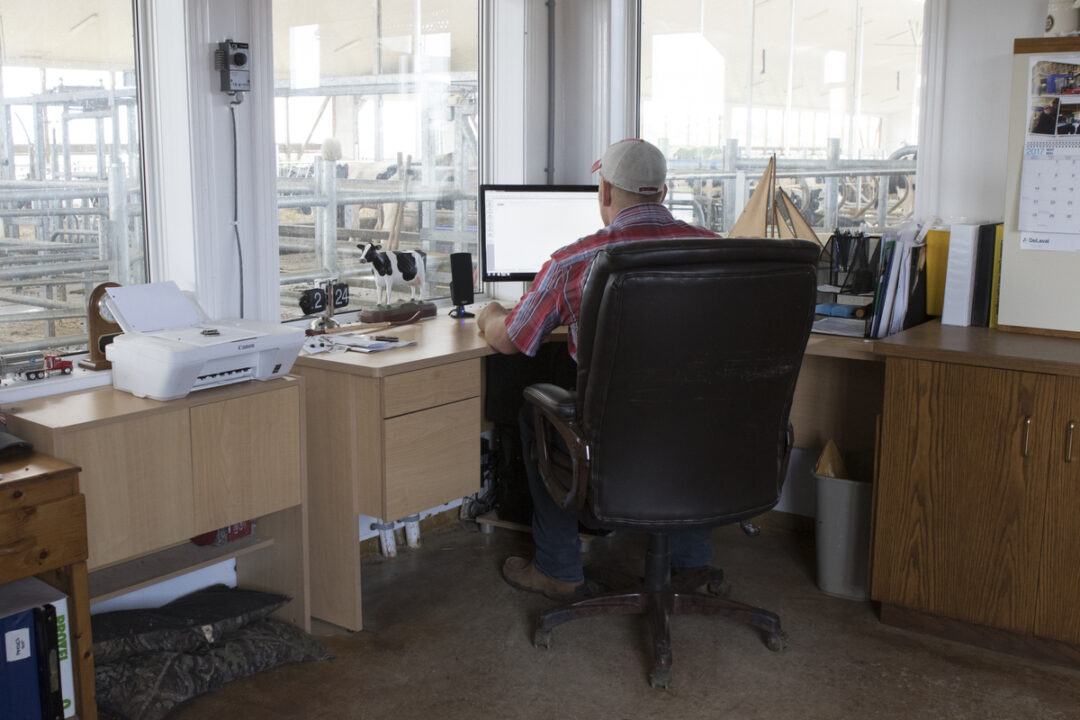bmoharris.com/agriculturebmoharris.com/agricultureYear after year, agriculture continues to rank as one of the most dangerous occupations. Far too many farmers, farm family members and employees are injured or killed in farm accidents. What are you doing to change this in your farm and community?
Have you implemented a culture of “two minutes for safety?” Usually, bad things happen when we are in too big of a hurry for safety. From my own farm accident experience, if I had slowed down and walked around a tractor, my accident would have never happened (you can read more about that here). But because I was in a hurry to keep up with the chopper on a long haul from the fields, I took a shortcut while unloading and found myself entangled in a silo blower. Implementing a culture of safety first is not easy, but it can be done. Examples of periods without incident in other businesses abound.
Setting an example
The first step to implementing a safety-oriented culture should be management modeling and leading by example. In other words, show everyone that you care about their safety by modeling safe practices. Take time to do things safely even though it may be faster to skip some steps, such as heading straight to the field with a combine instead of taking time to blow off the dust-collecting spots and checking all the safety equipment.
Furthermore, take time to run through a safety briefing before every major activity. Start the discussion by identifying the risks an activity has and how you want your workers to mitigate the risks. Be sure to point out where all of the necessary safety and first-aid equipment is located. The goal is to take two minutes to remind everyone to stay safety aware. Doing this will take some practice, and you will develop your own style, but you will send the clear message to your team that safety matters.
Additionally, your investment in safety equipment goes a long way to show how much you care about safety. If you leave damaged PTO covers unrepaired, don’t have roll bars or safety belts on some tractors or have poor lighting on vehicles used on a road, you’re sending a really bad message. Take the time to do a complete assessment of your operation as if you were an OSHA inspector, and look for things that could be problematic. Then communicate your plan to correct problems with your team. The National Farm Medicine Center has an abundance of safety resources to help you as you work through this process.
The power of storytelling
We may preach a “see something, say something” mantra when we talk about animal care, but how often do we encourage our team to take the same approach when it comes to unsafe practices? Do you keep track of farm accidents so that you and your team can learn from them? A great way to instill a safety thought process into your team is to share accident stories with them. Tellingthestoryproject.org has a great collection of firsthand accounts of farm accidents in the hopes that they’ll prevent similar incidents.
With so many employees training their peers, it is likely that if one employee is engaging in unsafe practices, they all are. Sharing stories at a staff meeting or during lunch-and-learn sessions can go a long way toward emphasizing your safety culture while also encouraging open discussion about it. After a major safety incident, consider implementing a military “safety stand down,” or a period of time dedicated to addressing the issue and providing additional focus to ensure change takes place. You know you are having an impact when you see employees correcting each other’s unsafe practices.
Especially for those families with kids on the farm, make sure they are performing age-appropriate tasks. It is impossible to pass a farm down to a deceased child. Too often, either out of necessity or an “our kids are exceptional” mentality, kids get put in a position where bad things happen. Mentally and physically, children are not the same as adults. If you go to any youth sporting events, you can see the eye-hand coordination difference between an 8-year-old and a 16-year-old. We would not expect an 8-year-old to make 90% of their free throws, but we often see a 16-year-old meet that threshold. The bottom line is that taking longer to get something done is way better than an injury or death.
Is the investment in safety worth it? I would say, yes. Every day that someone is off from work due to injury has a cost. That cost is likely seen in several areas:
- Lost productivity due to a substitute or untrained employee filling in.
- Increased workers’ compensation costs. Your farm’s incident frequency has a large impact on your insurance rates.
- Employee retention issues. Employees in an unsafe environment will look for other positions.
Finally, what are you doing to invest in farm safety research? I am fortunate that BMO has been extremely supportive of my involvement in the Auction of Champions, the primary fundraising event to support the National Farm Medicine Center in Marshfield, Wisconsin. BMO has allowed me to dedicate countless hours to being the chairman of the event while also financially supporting it. In this role, I have been exposed to countless research projects and trials, all of which could benefit from more farm participants. Search out your local farm safety group and see how you can get involved. Your time and talents could go a long way toward improving agriculture’s safety record.
This article is provided for information purposes only. Readers should consult their own professional advisers for specific advice tailored to their needs. Information contained in this article may be subject to change without notice.






